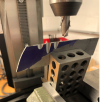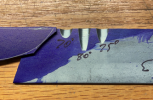- Joined
- Jun 3, 2019
- Messages
- 2,714
The system would not accept a pm to you...if you p.m me we could talk a
The BladeForums.com 2024 Traditional Knife is ready to order! See this thread for details:
https://www.bladeforums.com/threads/bladeforums-2024-traditional-knife.2003187/
Price is $300 $250 ea (shipped within CONUS). If you live outside the US, I will contact you after your order for extra shipping charges.
Order here: https://www.bladeforums.com/help/2024-traditional/ - Order as many as you like, we have plenty.
The system would not accept a pm to you...if you p.m me we could talk a
I'm afraid if I were to try to do that, it would just end up looking sloppy.
if you contact me via p.m we could talk and i could tell you how to do it .. or you can try to figure it all out for yourself.. your
Pinoy ... i believe you need to have a membership above basic to allow for pm discussions...if you p.m me we could talk a
I am not receiving anything from you…left ya a message
Here is a picture that hopefully explains what I meant. The fixture plate would go between the blade and the 1-2-3 block so you can clamp the blade securely and support the overhanging parts of the blade. If you have a way to rotate your vise ninety degrees, it would be worth doing that, otherwise you might run out of room, depending on the length of the blade and how long the tang is.I maybe understand, but really not sure. Could you pls post a photo at your convenience?

Ahh, I get it now. Thank you! Looks like I need to order some 123 blocks, and buy or make a fixture plate…Here is a picture that hopefully explains what I meant. The fixture plate would go between the blade and the 1-2-3 block so you can clamp the blade securely and support the overhanging parts of the blade. If you have a way to rotate your vise ninety degrees, it would be worth doing that, otherwise you might run out of room, depending on the length of the blade and how long the tang is.

Pinoy - I dont know what to tell you. The system will not allow me to post a PM to you (though it does allow me to post a PM to other people). Also, neither do I have any unopened messages in my incoming PM list. I also believe that you have to have a membership level *above* a free standard level to participate in PM activities. Technically challenged??? well, I will let others judge that.take away the end mill and use a carbide tapered burr.. while you are at it don't use the 123 block..
if you put o rings on the contact wheel and use a flex belt will it not conform to the shape below??
Cushing i saw what i posted this morning !! you must be tech challenged like me (ha-ha_) on your profile page..
Look at your profile on this site. He posted a message to you on it (not a PM).Pinoy - I dont know what to tell you. The system will not allow me to post a PM to you (though it does allow me to post a PM to other people). Also, neither do I have any unopened messages in my incoming PM list. I also believe that you have to have a membership level *above* a free standard level to participate in PM activities. Technically challenged??? well, I will let others judge that.
You may be right about the belts and o-rings approach, but I guess that its just that I happen to have this nice mini mill, and I just want to try doing the serrations with that approach. If it messes things up, I guess that is my risk...
Thanks for the heads up. Profile posts ... and area that I never look at, and to which I receive no notification when someone posts to it, but which is not the same as a PM. go figure.Look at your profile on this site. He posted a message to you on it (not a PM).
The tapered burr is a great idea, that way you can clamp the blade in the vise directly, much more rigid and you can do both sides at the same time without having to index the second side.take away the end mill and use a carbide tapered burr.. while you are at it don't use the 123 block..
if you put o rings on the contact wheel and use a flex belt will it not conform to the shape below??
Cushing i saw what i posted this morning !! you must be tech challenged like me (ha-ha_) on your profile page..
Freddy ... i am certainly no expert, but can relate what i see. On all my commercially made serrated knives, they are all double sided bevels, but the serrations are ground on one side only. Also, to my eye, all serrations are cut at a 45 degree angle from the center plane of the blade .Another question for all the serration experts. Should the bevel be one sided or two sided? Should the angle of the serration be different then the primary bevel (before sharpening). I noticed that a bread knife I have is ground from one side only and the serration have a shallower angle then the primary bevel. Then the serrations have a secondary bevel. This is what you see on pocket knifes as well, although primary grind is double sided. Another thing is also that you can angle the serrations away from the cut. Or that serrations are just perpendicular to profile and then the secondary bevels and ground (ie no bevel angle on the serrations). So many guestions. If I were to try it I would put the serrations at an angle before heat treating and then after HT grind one side only. Finally sharpen with diamond rod and/or sandpaper and debur the flat side.
Hey Storm. My hat is off to you for shaving with a straight razor - I just would not even think about it (too many nasty movies about that when I was younger I guess....).I sharpen serrated knives by polish the inside. I have a water wheel sharpener that has a leather wheel on the other side or I use something like a cork belt and just run it over the corner. Then polish the other side.
I have not heard of anyone who has out up any good photos or evidence that shows that whatLarrin showed in his study when it comes to sharpening. I have said before that I thought that unrefined so called toothy edges were just things that guys made up because they couldn't sharpen. I figured that I had to give it an honest try. They weren't wrong. The more I learn about abrasives and how they cut it makes sense to me at least. I think between the increased surface area of the high volume grit and the fact the edge gets flexible and can't hold the pressure to cut and after a certain point the grit no longer cuts and just burnishes the edge. If that's what is going on it would explain why edge retention drops by a fatigue mechanism and with any catching and fatigue it would possibly damage the apex. I am probably thinking about it wrong but I can't think of a reason why course grit can't give the same Apex. If the angles are the same if the grit is cutting it should give the same Apex. I also get that a more polished edge might be better but there has to be a point when the grit stops cutting. Polished edges heritage come from razors and ultra low alloy steel that would be easy to cut. The majority would not have any carbide at all. That would mean that the natural stones would probably still cut it down to a finer grit. Many historic knives were under 50 Rc. I shave with a straight razor and much of the polishing has to do with comfort. I have a 66 Rc M4 blade sharpened on diamond stone and it is nearly as sharp at 300 grit. If I dropped the angle and switched to 600 grit it would probably be sharper. It could be an experiment to use different hardnesses and carbide volume and see how it affects sharpness and edge retention. I know that using a DMT Course will get my knives shaving sharp after a quick strop. It only takes a max if 2 minutes to get a knife there if it hasn't been sharpened in years and 3 strokes per side whenever it no longer easily shaves. For me unless I have a specific need it is just to hard not to use an easy way like this to keep my knives tuned up like this. I don't need everything perfect. If they shave easy they are good enough unless I am doing something special.
From my experience a "toothy" edge does a great job. If you can push cut tissue paper you can do it with tomatoes but if you draw the cut the blade eats the tomato.


